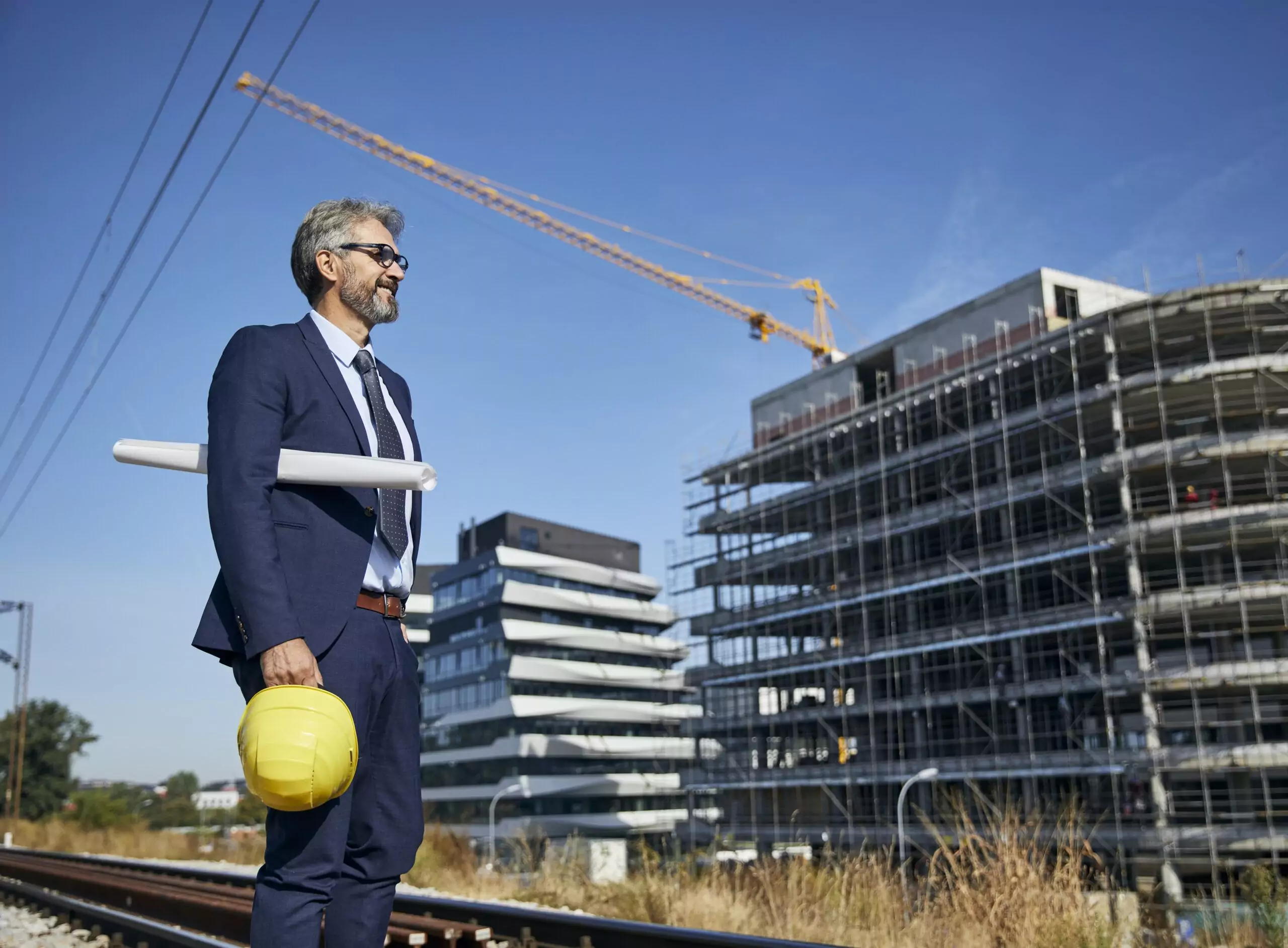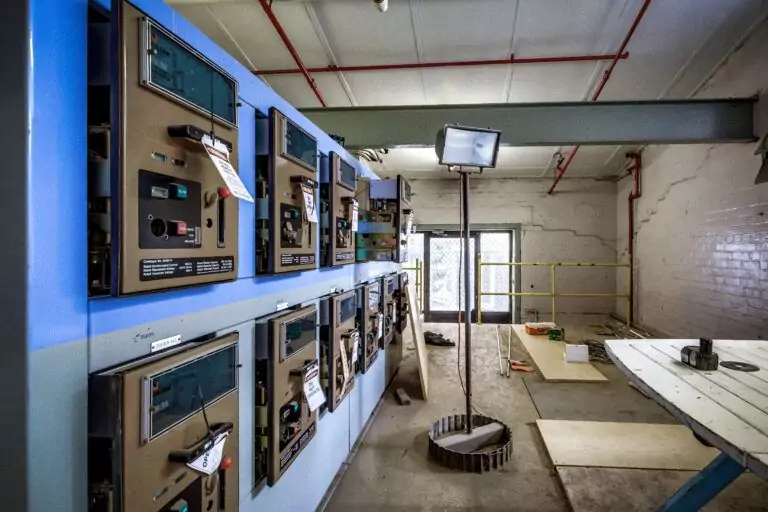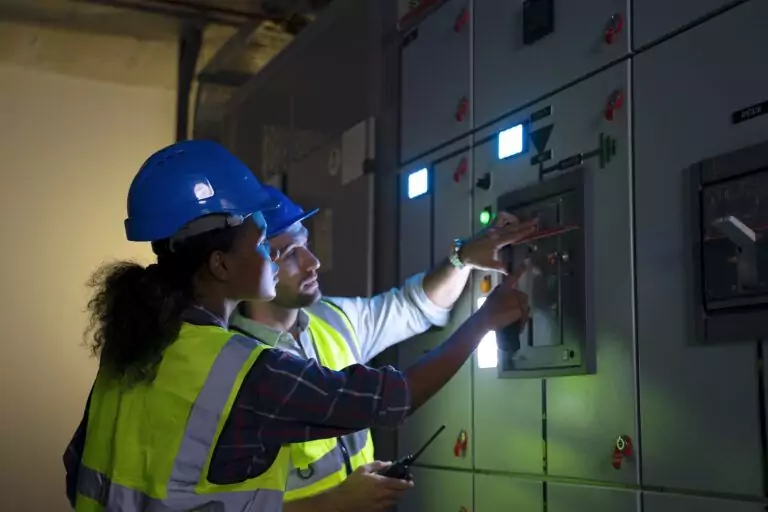In the intricate world of civil and structural engineering, the blend of creativity, precision, and innovation crafts the backbone of our physical world, from the towering skyscrapers that puncture the skyline to the bridges that span our vast waterways. This article explores the essential skills that are the backbone of civil and structural engineers. From the mathematical prowess needed for structural analysis and the geometric precision required for design accuracy to the analytical thinking that optimises resource use and the problem-solving capabilities that identify and rectify structural weaknesses.
We explore the importance of understanding construction materials, from traditional steel and concrete to innovative composites, and the project management skills necessary to bring visions to life within budget and on schedule. Communication skills, attention to detail, and deep knowledge of design software are also highlighted as indispensable tools in the engineer’s arsenal. Moreover, the article underscores the critical role of sustainability and environmental awareness in modern engineering projects, emphasising the need for designs that minimise ecological impact while meeting societal needs.
Join us as we unpack the myriad of skills that enable civil and structural engineers to shape the world around us, ensuring safety, efficiency, and innovation at every turn.
Mathematical Proficiency
Mathematical proficiency is a comprehensive understanding and capability in mathematics that encompasses not only the ability to perform mathematical procedures accurately and efficiently but also a deep understanding of mathematical concepts, the ability to solve mathematical problems, the capacity to reason mathematically, and a productive disposition toward mathematical challenges. This multifaceted proficiency is crucial for success in a world that is increasingly reliant on quantitative and analytical skills across a wide range of professions and everyday life situations. At the core of mathematical proficiency is conceptual understanding, which involves comprehending mathematical concepts, operations, and relations.
Achieving mathematical proficiency is a goal of education systems worldwide, recognising its vital role in personal development, economic advancement, and societal well-being. As such, educational strategies and curricula are increasingly designed to nurture these components of proficiency from an early age, aiming to equip students with the mathematical understanding and skills they need to navigate and succeed in the modern world.
Calculus for Structural Analysis
Calculus is indispensable in the field of structural analysis, providing a robust mathematical framework essential for understanding and predicting how structures behave under various conditions. Through the application of differential and integral calculus, engineers can accurately model the stresses and strains materials experience, leading to the design of structures that are not only safe but also efficient. Calculus enables the precise determination of critical parameters, such as forces and moments, which are crucial in ensuring the structural integrity and stability of constructions ranging from towering skyscrapers to expansive bridges.
This precise mathematical approach is crucial for ensuring that structures can withstand external pressures, including environmental forces and human-induced loads, thereby safeguarding public safety.
Geometry for Design Accuracy
In the realm of architecture and engineering, geometry is crucial for attaining design accuracy, acting as the conduit through which conceptual ideas are transformed into physical realities. It equips designers with the necessary tools to create exact models, enabling the meticulous planning and realisation of designs. Geometry’s role extends from the fundamental understanding of shapes and spaces to the intricate patterns seen in sophisticated designs, aiding in the visualisation and materialisation of structures that are both visually appealing and structurally robust.
The strategic application of geometric principles ensures that every component, be it an angle, curve, or line, contributes to the overall aesthetic and functional coherence of the design, allowing for the successful execution of even the most visionary projects with unparalleled precision.
Statistics for Risk Assessment
Statistics play a pivotal role in risk assessment across a variety of sectors, providing the means to analyse data and make informed decisions grounded in probabilistic models of uncertainty. Through statistical analysis, it’s possible to gauge the likelihood of adverse occurrences and their potential impacts, paving the way for the development of effective risk mitigation strategies. Employed across various disciplines, including engineering, finance, healthcare, and environmental science, statistics provide a quantitative foundation for hazard evaluation, future trend forecasting, and contingency planning.
This analytical approach to risk comprehension equips organisations and individuals with the insights needed to anticipate the unforeseen, ensuring they are better prepared to safeguard assets, lives, and the environment against potential threats.
Analytical Thinking
Analytical thinking is a pivotal skill for civil and structural engineers, crucial for assessing design efficiency and optimising resource use. This skill involves breaking down complex problems into more manageable components and then examining each piece through the lens of logical reasoning and quantitative analysis. Engineers harness analytical thinking to pinpoint the most effective solutions, ensuring structures not only meet functional requirements but do so in a cost-efficient manner.
By employing this skill, professionals are equipped to anticipate potential challenges, streamline construction methodologies, and amplify the sustainability of their projects. Thus, analytical thinking stands at the heart of successful engineering endeavours, fostering the development of safer, more durable, and resource-efficient infrastructures.
Evaluating Design Efficiency
Evaluating design efficiency is essential for ensuring that engineering projects not only meet but exceed performance expectations with minimal waste and reduced costs. This critical analysis focuses on scrutinising every aspect of the project, from the selection of materials and structural configurations to the application of construction techniques. The goal is to identify areas where efficiency can be improved, thereby enhancing the overall functionality, durability, and cost-effectiveness of structures.
Through this meticulous evaluation, engineers can ensure that projects fulfil their intended functions optimally without an unnecessary allocation of resources.
Optimising Resource Use
Optimising resource use plays a crucial role in advancing sustainable engineering solutions. This approach entails a judicious selection and utilisation of materials, workforce, and energy, aiming to enhance project outcomes while minimising environmental impacts. Strategic planning and innovative design are instrumental in minimising waste and expenses, contributing to the creation of eco-friendly construction practices.
By prioritising optimisation, engineers not only advocate for project sustainability but also champion economic viability and environmental stewardship, thereby paving the way for a more sustainable future in the construction industry.
Problem-solving Skills
Problem-solving skills are paramount for civil and structural engineers, equipping them to navigate the intricate challenges encountered in the design and execution of infrastructure projects. These competencies enable professionals to identify structural weaknesses and develop innovative solutions, ensuring projects are not only safe but also efficient and sustainable. Utilising a blend of critical thinking and creativity, engineers are tasked with integrating cutting-edge technologies and materials to surmount obstacles.
Identifying Structural Weaknesses
Identifying structural weaknesses stands as a crucial endeavour in the realm of engineering, demanding meticulous attention to detail and a profound comprehension of both material properties and structural dynamics. Engineers are tasked with pinpointing vulnerabilities within designs, ranging from fundamental flaws to critical stress points, that could potentially compromise the safety and durability of structures. This thorough scrutiny enables the proactive reinforcement or redesign of elements to avert failures, ensuring structures are built to last and withstand the tests they are subjected to.
Developing Innovative Solutions
Developing innovative solutions encapsulates the essence of engineering ingenuity. Confronted with the weaknesses or challenges unearthed during analysis, engineers leverage their creativity alongside their technical expertise to devise innovative solutions that enhance structural integrity and overall functionality. Whether it’s through the exploration of cutting-edge materials, the integration of state-of-the-art technologies, or the execution of revolutionary design strategies, these solutions not only rectify existing issues but also advance the field of civil and structural engineering into new territories of possibility and performance.
Knowledge of Design Software
In today’s civil and structural engineering landscape, knowledge of design software is non-negotiable. This critical skill set includes proficiency in tools such as AutoCAD for crafting detailed plans, Revit for building information modelling (BIM), and Civil 3D for comprehensive infrastructure design. Mastery of these digital platforms empowers engineers to visualise, simulate, and analyse their projects with an unparalleled level of precision and efficiency.
AutoCAD for Drafting Plans
AutoCAD serves as the foundational tool for drafting detailed architectural and engineering plans. It provides a comprehensive suite of tools for creating precise 2D and 3D models, making it an essential asset for visualising intricate designs with the utmost detail. The software’s precision and adaptability ensure that all aspects of a project are thoroughly planned and documented, significantly boosting the design process’s efficiency and reliability.
Revit for Building Information Modeling
Revit is a leader in Building Information Modeling (BIM), offering an immersive platform for designing, visualising, simulating, and collaborating on projects within a unified, multidimensional environment. This tool revolutionises building design by ensuring that any modifications are automatically reflected across the model, thereby maintaining consistency and accuracy. With capabilities that extend to supporting sustainable design, clash detection, and construction planning, Revit is indispensable for executing complex engineering projects in today’s fast-paced environment.
Civil 3D for Infrastructure Design
Civil 3D is engineered specifically for the nuanced needs of infrastructure design and civil engineering, seamlessly integrating with AutoCAD and Revit to provide a robust solution for civil projects. This software excels in modelling terrain, analysing water flow, and planning transport routes, among other critical functions. Civil 3D’s proficiency in managing large-scale projects that require meticulous consideration of geographical and topological elements is crucial for the streamlined and successful planning of public works and infrastructure developments.
Understanding of Construction Materials
An in-depth understanding of construction materials is pivotal for civil and structural engineers, equipping them to select the optimal materials for each project judiciously. This expertise encompasses the characteristics, strengths, and limitations of traditional materials, including steel and concrete, as well as innovative composites. Engineers are tasked with assessing how these materials will perform under a variety of conditions, including exposure to stress, weather, and the passage of time, to guarantee the longevity and safety of the structures they create.Moreover, a keen awareness of sustainable materials and construction practices has become indispensable, steering the industry towards more environmentally responsible building methods. This comprehensive knowledge not only bolsters the resilience and efficacy of projects but also ensures compliance with evolving environmental standards and societal expectations.
Steel for Structural Frameworks
Steel is paramount in the construction of structural frameworks due to its exceptional strength and flexibility. It enables the crafting of slender yet robust frameworks that can endure significant forces and deformations, ensuring structural integrity. The versatility of steel facilitates architectural innovation, allowing for the execution of complex and aesthetically pleasing designs that satisfy both functional and regulatory demands.
Concrete for Foundations and Structures
Concrete is the cornerstone of contemporary construction, laying the foundation for a vast array of buildings and infrastructure projects. Celebrated for its outstanding compressive strength and longevity, concrete forms the bedrock of resilient structures. When combined with steel reinforcement, its structural capabilities are exponentially increased, supporting diverse architectural forms and offering enhanced resistance to environmental stressors.
Composites for Innovative Applications
Composites stand at the forefront of construction material innovation, blending two or more constituents to surpass the limitations of traditional materials. These engineered solutions deliver advanced strength, durability, and environmental resistance, charting new paths for construction innovation. From high-performance building elements to pioneering applications in bridges and aerospace, composites are reshaping the landscape of construction with their unparalleled versatility and performance.
Project Management Skills
Project management skills are crucial for civil and structural engineers, empowering them to steer projects from their inception to fruition. These competencies include budgeting and cost estimation, critical for maintaining financial health; scheduling and timeline management, essential for meeting project milestones; and resource allocation and optimisation, pivotal for the efficient use of both human and material resources. Proficiency in project management allows engineers to effectively tackle the multifaceted nature of construction projects, adeptly handling any challenges with strategic foresight and clear communication.
Budgeting and Cost Estimation
Budgeting and cost estimation play a pivotal role in maintaining the financial health of engineering projects. This critical process involves accurately forecasting the costs associated with various project elements, including materials, labour, and equipment. By developing a detailed budget, project managers can secure the necessary funding, make strategic decisions, and prevent financial overruns, ensuring the project’s economic sustainability from start to finish.
Scheduling and Timeline Management
Scheduling and timeline management are essential for the timely completion of projects. They require the careful organisation of project phases and the efficient coordination of tasks. Through diligent planning and management, potential delays are identified and mitigated early on, keeping the project on its intended course and meeting the expectations of all stakeholders involved.
Resource Allocation and Optimization
Resource allocation and optimisation focus on the judicious use of resources to enhance project efficiency and effectiveness. This strategy entails the smart distribution of personnel, materials, and machinery, taking into account factors like cost-efficiency, availability, and specific project needs. Optimal resource management ensures that projects not only meet their budgetary and temporal constraints but also achieve superior quality and performance standards.
Communication Skills
Communication skills are indispensable for civil and structural engineers, enabling them to effectively collaborate with project teams, clients, stakeholders, and the broader public. These skills encompass both clear and concise verbal and written communication, crucial for making complex technical information accessible to non-specialists. Whether through detailed technical reports, persuasive presentations, or routine updates, the ability to effectively share ideas, relay technical specifics, and engage in active listening is paramount to the success of engineering projects.
Effective Written and Verbal Communication
Effective written and verbal communication is essential for the clear conveyance of project objectives and for fostering mutual understanding among project stakeholders. Engineers must excel in articulating complex concepts and technical details in an accessible manner, promoting informed decision-making and enhancing collaborative efforts across the project spectrum.
Technical Report Writing
Technical report writing is a key aspect of engineering communication, focusing on the meticulous documentation of project specifics, findings, and actionable insights. This discipline ensures that all project facets are recorded with clarity and precision, offering a structured and comprehensive presentation of data and analyses vital for supporting the engineering workflow and guiding informed decisions.
Client and Team Communication
Client and team communication plays a pivotal role in establishing and nurturing effective working relationships, which is crucial for aligning project execution with client expectations and project objectives. Mastery in this area requires active listening, the articulate expression of ideas, and the adept handling of feedback, all of which are instrumental in driving project success and achieving shared goals.
Attention to Detail
Attention to detail is an indispensable skill for civil and structural engineers, serving as the foundation for the precision and accuracy indispensable in all aspects of project execution. This rigorous focus on detail ensures that designs are flawlessly realised, calculations are meticulously accurate, and documentation is thoroughly comprehensive and error-free. By elevating attention to detail to a priority, engineers significantly mitigate risks, avert costly mistakes, and bolster the safety and longevity of structures.
Precision in Design and Calculations
Precision in design and calculations is crucial, serving as the cornerstone of ensuring the structural integrity and operational functionality of engineering projects. This level of precision enables engineers to forecast accurately the behavior of structures under various stresses and conditions, significantly reducing the likelihood of structural failures and bolstering the safety of the constructed environment.
Thoroughness in Project Documentation
Thoroughness in project documentation plays a vital role in the engineering process, ensuring that every detail of the project’s planning, execution, and completion is meticulously recorded. This comprehensive approach to documentation not only facilitates clear and effective communication among all project stakeholders but also supports future maintenance efforts, enables seamless project expansions, and guarantees adherence to industry regulations and standards.
Creativity and Innovation
Creativity and innovation stand at the forefront of civil and structural engineering, propelling the advancement of design and construction practices. These essential elements empower engineers to envision and realise structures that not only fulfil functional and safety requirements but also captivate through aesthetic appeal and environmental stewardship. By embracing new materials and cutting-edge technologies, engineers craft flexible and adaptable solutions tailored to tackle modern-day challenges such as rapid urbanisation, climate change, and the efficient use of resources.
Designing Flexible and Adaptable Structures
Designing flexible and adaptable structures emerges as a key strategy to accommodate the evolving demands of society and the environment. This design philosophy ensures that buildings and infrastructure can adapt over time to new uses, societal shifts, or environmental changes, thereby extending their utility and reducing the need for costly renovations or replacements.
Incorporating New Materials and Technologies
Incorporating new materials and technologies is pivotal in driving the construction industry towards more innovative, efficient, and sustainable practices. By embracing these advancements, engineers are able to break through traditional design barriers, achieving higher levels of performance, durability, and environmental sustainability in their projects. This forward-thinking approach not only enhances the quality of constructions but also contributes to the well-being of communities and the planet.
Teamwork and Collaboration
Teamwork and collaboration are essential pillars in the realm of civil and structural engineering, crucial for harnessing a wide array of skills, perspectives, and expertise necessary to address the complexities of modern projects. This collective approach not only sparks innovation but also strengthens problem-solving capabilities, ensuring a well-rounded strategy for project planning and implementation. Collaborating closely with architects, contractors, and various stakeholders allows engineers to align efforts, exchange valuable insights, and effectively overcome obstacles, culminating in the successful completion of projects.
Working with Multidisciplinary Teams
Working with multidisciplinary teams is crucial for civil and structural engineers, as it allows for the pooling of varied expertise and viewpoints. This collaborative effort is vital for driving the innovation and efficiency of projects, ensuring comprehensive consideration and optimisation of all facets of design, construction, and project functionality.
Coordinating with Contractors and Architects
Coordinating with contractors and architects plays a pivotal role in the successful implementation of engineering projects. Effective coordination guarantees that the project’s vision and objectives are achieved in alignment with established design standards, timelines, and budget constraints. This collaboration creates a unified and efficient work environment, pivotal for realising project goals and ensuring success.
Knowledge of Building Codes and Regulations
Knowledge of building codes and regulations is crucial for civil and structural engineers, serving as the foundation for ensuring projects adhere to established legal and safety standards. This critical expertise includes a comprehensive understanding of both local and international codes, which set forth the essential criteria for structural integrity, safety, accessibility, and minimising environmental impact. Engineers are required to keep up-to-date with these constantly evolving regulations to protect public well-being and the environment effectively.
Local and International Building Standards
Local and international building standards establish critical benchmarks for the design, construction, and ongoing maintenance of structures, aiming to ensure their safety, accessibility, and longevity. Engineers are tasked with striking an intricate balance between aligning project designs to meet the immediate needs of local communities and adhering to the expansive principles outlined in international protocols. This dual adherence guarantees that structures not only serve local needs effectively but also reflect global best practices in construction and engineering.
Environmental and Safety Regulations
Environmental and safety regulations play a pivotal role in safeguarding the natural world and public health. These guidelines compel engineers to integrate sustainable methodologies and robust safety protocols into their projects. This encompasses efforts to reduce environmental degradation and to protect the health and safety of both construction personnel and the eventual users of the structures.
Proficiency in navigating these regulations is paramount for fostering environmentally responsible development and ensuring the creation of secure, healthful environments.
Sustainability and Environmental Awareness
Sustainability and environmental awareness are at the forefront of modern civil and structural engineering, marking a pivotal shift toward more responsible and environmentally friendly construction methodologies. This paradigm underscores the imperative for engineers to devise projects that significantly reduce environmental footprints, conserve natural resources, and bolster community resilience against climate change. Through the integration of sustainable materials, energy-efficient technologies, and forward-thinking design principles, engineers are equipped to construct infrastructure that satisfies current demands without compromising the ability of future generations to meet their own needs.
Designing Energy-Efficient Structures
Designing energy-efficient structures is a critical endeavour that aims to significantly lower energy consumption and diminish greenhouse gas emissions. Achieving this involves the thoughtful integration of insulation, natural light optimisation, and the incorporation of renewable energy sources. Such designs not only contribute to the building’s sustainability but also enhance occupant comfort and reduce long-term operational costs.
Implementing Sustainable Construction Practices
Implementing sustainable construction practices is about adopting methodologies that lessen the environmental footprint of construction activities. Key strategies include the use of recycled materials, waste minimisation techniques, and resource-conserving construction methods. These practices ensure that building projects are executed in a manner that promotes environmental preservation and sustainability, aligning with global efforts towards ecological responsibility.
Shaping the Future of Infrastructure
Civil and structural engineering is a discipline that requires a diverse range of skills, including advanced mathematical proficiency, problem-solving, effective communication, and sustainability awareness. As the industry evolves, the integration of new materials, innovative technologies, and environmental consciousness continues to play a crucial role in shaping the built environment. Engineers today are tasked with creating structures that not only meet immediate needs but are resilient, adaptable, and mindful of the future.
At Vista Projects, we combine decades of engineering expertise with a commitment to sustainability, delivering high-quality, innovative infrastructure solutions that meet the needs of our clients. Our team excels in optimising resources, enhancing design efficiency, and ensuring compliance with environmental standards.
Ready to build the future with us? Contact Vista Projects today, and let’s create resilient, sustainable infrastructure together.









